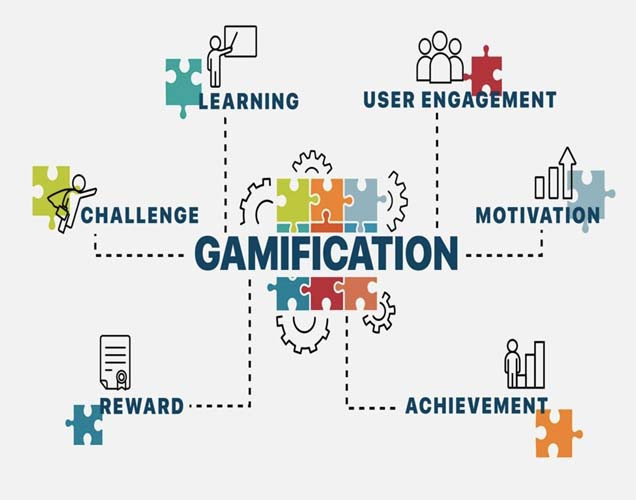Introduction:
In recent years, the world of education has witnessed a significant transformation, driven by innovative approaches that cater to diverse learning styles and needs. Among these approaches, game-based learning (GBL) has emerged as a powerful tool, harnessing the natural appeal of games to enhance educational outcomes. This blog post will delve into game-based learning, its benefits, real-world applications, and tips for implementing it effectively.
What is Game-Based Learning?
Game-based learning is an educational method that incorporates gaming elements and principles into the learning process. Unlike games, that involve the application of game-like features (such as badges or leaderboard) to non-game contexts, GBL integrates actual games into the learning environment. These games are designed to teach specific skills or knowledge while engaging students dynamically and interactively.
Why Game-Based Learning?
The Benefits
1. Increased Engagement:
One of the most compelling reasons to incorporate games into education is their ability to captivate students. Games are inherently engaging, with their interactive nature and built-in reward systems. By embedding educational content within a game, students are more likely to remain focused and motivated.
2. Enhanced Motivation:
Games often include elements like points, levels, and achievements that incentivize progress. This motivational boost can be incredibly effective in encouraging students to tackle challenging material and persist through difficulties.
3. Improved Problem-Solving Skills:
Many educational games are designed to challenge players with complex problems and puzzles. Engaging in these games helps students develop critical thinking and problem-solving skills, as they must strategize and adapt their approaches to succeed.
.Examples of Game-Based Learning in Action
1. Creativity Express Online:
Creativity Express Online is an online game that helps students learn about creativity and self-expression. The game includes a variety of activities that encourage players to be creative and express themselves through art. The game is also interactive, allowing players to share their creations with others and receive feedback. It helps students develop creative thinking and problem-solving skills.
2. National Geographic Kids:
National Geographic Kids is an educational game that can be used in the classrooms. It helps children learn about different countries and cultures and teaches the basic geography skills. The game is easy to use and can be played by children of all ages. It is also a great way to introduce children to different cultures and to get them interested in learning about other countries
3. Min-craft Education Edition
Mine-Craft Education Edition adapts the beloved game for educational purposes, allowing students to explore and create within a virtual world. It’s used to teach subjects ranging from history and science to art and coding, promoting creativity and collaboration.
Designing Effective Game-Based Learning Experiences
To maximize the impact of game-based learning, consider the following tips:
1. Align with Learning Objectives
Ensure that the game you choose or design aligns with the educational goals you aim to achieve. The game should reinforce the concepts being taught and provide meaningful learning experiences.
2. Engage and Challenge
Select games that are both engaging and challenging. They should capture student’s interest while pushing them to think critically and solve problems. A well-designed game balances fun with educational content.
3. Balance
Maintain a balance between gameplay and learning. While the game should be enjoyable, it’s crucial that it also delivers educational content effectively. Avoid letting the entertainment aspect overshadow the learning objectives.
Overcoming Challenges in Game-Based Learning
While game-based learning offers numerous benefits, it’s essential to address potential challenges:
1. Cost
Some educational games or platforms can be expensive. Consider exploring free or low-cost options, or look for grants and funding opportunities that support innovative teaching methods.
2. Accessibility
Not all students may have access to the technology required for game-based learning. Ensure that the chosen games are accessible to all students, or provide alternative resources for those who may face barriers.
3. Time
Incorporating games into the curriculum requires additional planning and time. Integrate games thoughtfully to complement the existing curriculum without overwhelming your schedule.
The Future of Game-Based Learning
Looking ahead, the future of game-based learning promises exciting advancements. The integration of virtual reality (VR) and augmented reality (AR) can create immersive learning experiences, while adaptive learning technologies will tailor games to individual learning styles. Additionally, multiplayer and collaborative games will foster teamwork and communication skills, preparing students for the complexities of the modern world.
Conclusion
Game-based learning is more than just a trend—it’s a transformative approach that has the potential to revolutionize education. By blending the thrill of games with educational content, we can create engaging and effective learning experiences that motivate students and enhance their skills. As educators, it’s time to embrace the power of play and unlock new possibilities in the classroom.
Have you experimented with game-based learning in your educational practice? Share your experiences or explore the games mentioned in this blog to see how they can enhance your teaching methods. The future of education is here, and it’s playfully interactive!


